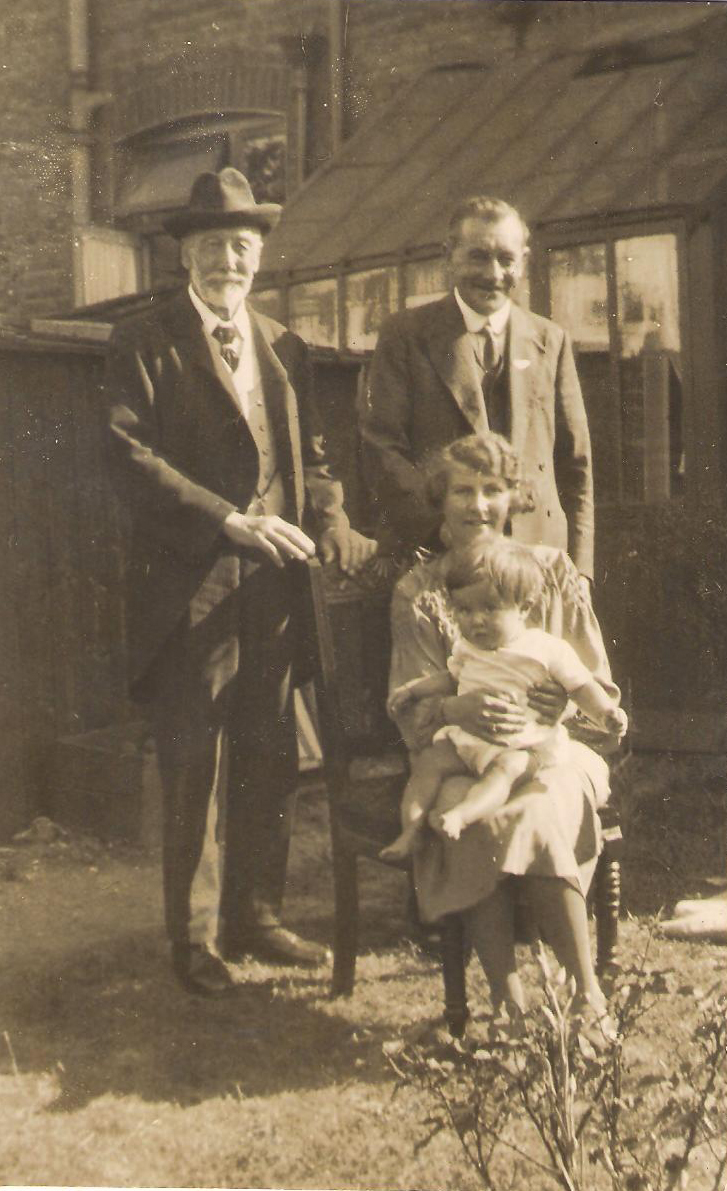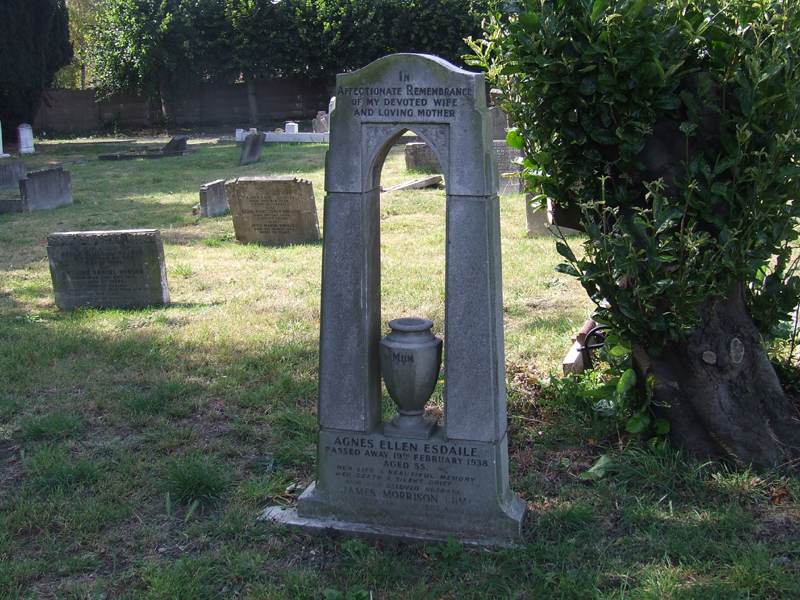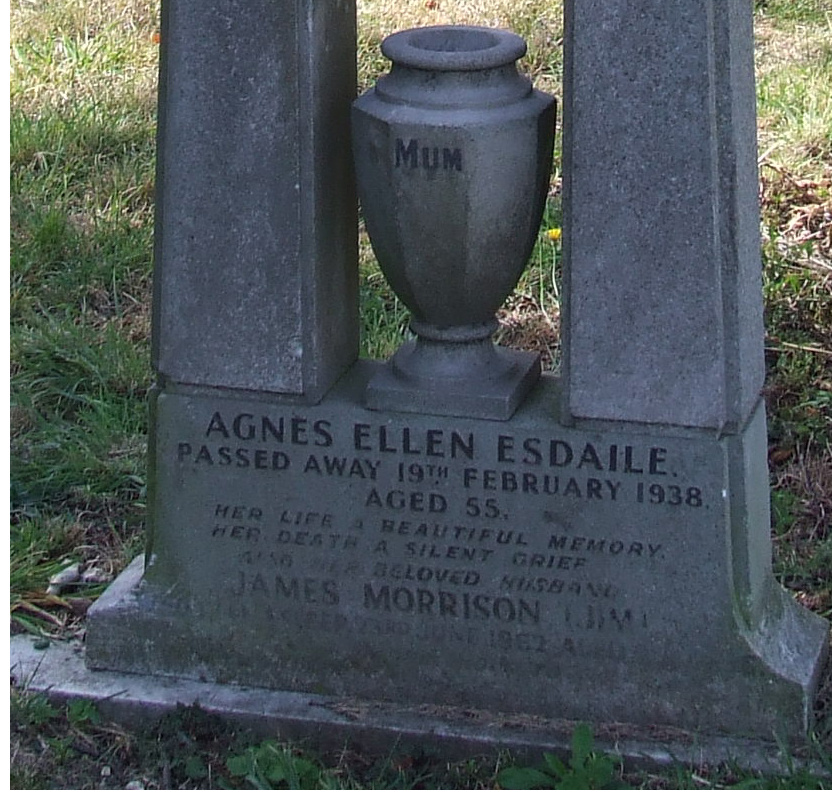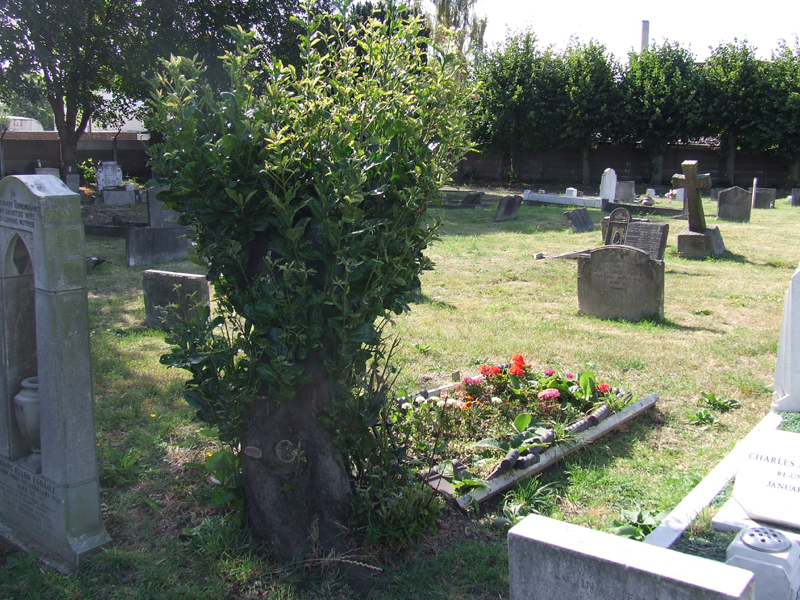(John
Humphries has provided the following text and research.)
The earliest reference we have to Samuel Esdaile is
in the 1861 UK Census which dispassionately
describes him as a boarder, aged three, in the home
of Robert and Sarah Pine. His place of birth is
described as unknown suggesting that the poor little
soul was an orphan. The Pines lived at 18, Style
Place, Hadlow, near Tonbridge in Kent and they were
presumably fostering Samuel. While Style Place in
the 1860s was best known as the location of a
brewery, the village of Hadlow was also well known
as an area much used by The Foundling Hospital, the
great institution set up in the 18th Century by
Thomas Coram and sponsored by Handel, for placing
orphans with families. The Foundling Hospital would
take in orphans, raise them and educate them, and
many were then signed up for the army, often as band
boys. As a Foundling Hospital boy, Esdaile would not
have been his mothers name: it was the Hospitals
policy to sever the link between mother and baby
completely, right up until 1948. The children were
given new surnames, though nobody knows how they
were chosen. One theory is that they were allocated
at random from street directories.
We next hear of him in the 1871 census in a huge
list of 13 year-old scholars all of whom were listed
as place of birth: unknown living at the Foundling
Hospital in Grays Inn Road, London, and 10 years
later, aged 23, he appears as a soldier, living at
Maryhill Barracks in Glasgow. During the next two
years he must have met Mary, an Aberdeen girl the
same age as himself, whom he married and with whom
he had three children. The oldest, a daughter, was
Sarah, born in 1883, who was followed by two boys,
James and Charles. All were born in Aberdeen, which
suggests that the family must at least partially
have resided there, even though Samuel was starting
to establish a reputation as a horn player in
London.
He was also beginning to attract attention in
Aberdeen: From around the beginning of 1887, the
music critic from the local arts magazine, the
splendidly named Northern Figaro seems to have
started to notice the horn player with the local
(amateur) Philharmonic Society. Despite being an
essentially amateur organisation, the Philharmonic
had no local amateur horn players and would hire
several efficient men from south awa. We hear that
the horns did admirable service and he singled out
the still-anonymous horn player for praise again on
April 2nd. He was not anonymous in the Aberdeen
Weekly Journal, however: three days earlier,
on March 30th, their musical correspondent had
pronounced that The favourite piece with the
audience was Rossinis Semiramide, where the oboes
and French horn came in with admirable effect, the
latter being played by Mr. Esdaile, of Richter and
Manns orchestras. Manns orchestra refers to the
Crystal Palace Orchestra, which was conducted by
Auguste Manns, while Richters Orchestra, conducted
by the great conductor and former horn player Hans
Richter, gave concert series in London 1879 until
1897.
The following season, on March 31st, 1888, the
Figaro described the Philharmonics programme for
April 3rd, writing then we have the horn solo by Mr
Esdaile, well known in the Manns and Richters
organisation. This was another success in the eyes
of the man at the Figaro, who, writing on 7th April,
felt that the horn solo, too, was in its way a
treat, and gave one a good idea of how very mellow
tone can be extracted from that very mellow
instrument, the French horn. Mr Esdaile was loudly
applauded for his efforts. Esdaile must have been a
hit with other people too, because the following
year, on March 16th, 1889, the Northern Figaro, when
previewing the Phils concert on March 26 at the
Music Hall, wrote that Mr S Esdaile, who has before
been heard to great advantage at the Concerts will
again be the solo horn player. The programme, which
was printed in full, shows that he played a Nocturne
by Cavalazzi in the first half and an Ave Maria by
Laszlo.
By the date of the 1891 census, Esdaile and his
family lived at 2, Sainsbury Road, Norwood, South
London an address which was a stone's throw from
Gypsy Hill rail station and thus very convenient for
getting into Central London, and an easy walk from
the Crystal Palace. In the cemetery at West Norwood,
there is a grave for "Samuel Bently Esdaile", who
was buried aged 2 months on 9 March 1893, who was
possibly another son. After the tragedy of Mary's
death in 1895, Samuel and his children moved to 50a
Queens Road, Battersea. A band list of the Crystal
Palace Orchestra in 1899 shows that Esdaile was no
longer playing with them, so the need to live in
Norwood had passed, but presumably the need to get
into London and more importantly out of London late
at night after concerts, necessitated living close
to a railway station: Queens Road Battersea Station
is just a five minute trip from Waterloo.
Happier times seemed to follow in 1904 when his
daughter Sarah married, and Esdaile himself
remarried in 1910. His playing career continued he
was one of the 24 horn players who played at the
concert held at the Royal Albert Hall in 1912 in
memory of the victims of the Titanic disaster. He
also seems to have played in the New Symphony
Orchestra and to have provided regular professional
assistance to the Amateur Orchestral Society. He
died in the early months of 1939. His
great-grandson, Derek William Morrison Pyne,
comments:
The only memories I have about 'Pommy', as we
called him, are that he was a French horn player
and invented a reed to improve the capability of
the instrument. He cleaned his teeth with soot
from the chimney and had all his teeth when he
died.
I believe he is buried in Streatham Cemetery in
London SW.
|




